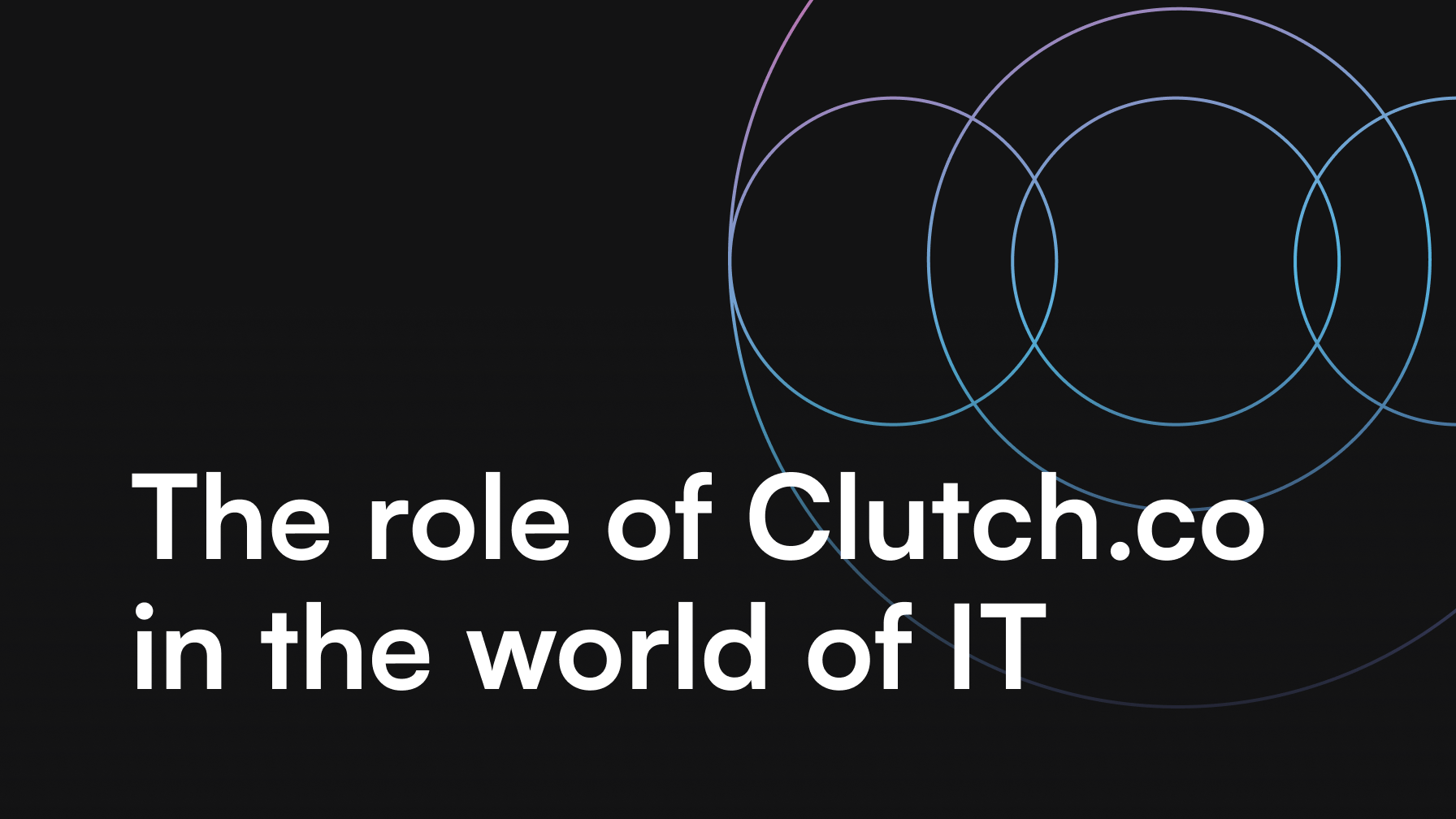Why US Enterprises Should Invest in Flutter App Development

Gareth Smith

Improving efficiency and digitizing manual processes saw the rise in digital transformation projects throughout the 1990s and 2000s. Over twenty years later, the rapid advance in technology and the changes in consumer habits has seen companies dedicate significant annual budgets to digital adoption and app development to further improve processes and overall efficiency. Custom software development projects and the integration of cloud technologies requires significant engagement from both internal and external stakeholders along with sufficient financial investment. The key to success in such endeavors is a harmonious alignment between specific business objectives and choosing the right technology approach to deliver a company’s strategy.
9 Strategic Reasons large enterprises invest in digital technology
Strategic investment into app development plays a part in a large enterprise’s digital adoption strategy and often includes the creation of custom mobile development for Android and iOS devices, and web apps with a friendly user interface accessible on web browsers. Whatever the initial reason to build apps is, enterprise app development must generate significant business value to justify the investment. While the benefits are multifaceted, large enterprises consider the following strategic objectives when establishing their budget for digital projects and mobile app development.
- Seamless Integration with Existing Systems
One of the primary advantages of digital products is their ability to seamlessly integrate with other business systems and technologies already in place. In a modern enterprise environment, various software solutions, applications, and tools coexist. Having an appropriate budget to invest in digital products increases the chances of success to seamlessly communicate and share data, eliminating data silos and streamline processes. This interoperability boosts operational efficiency, reduces redundancy, and enhances the overall flow of information within an organization. - Unleashing the Power of Analytics
Digital products provide large enterprises with a robust platform for harnessing the power of data analytics. With the ability to collect, process, and analyze vast amounts of data, organizations can gain invaluable insights into their operations, customer behavior, and market trends. This data-driven approach empowers decision-makers to make informed choices, optimize strategies, and identify areas for improvement. The result? Improved efficiency, cost savings, and a sharper competitive edge. - Predictive Analytics for Proactive Decision-Making
While traditional analytics offer insights into historical data, predictive analytics take it a step further by forecasting future trends and outcomes. Large enterprises use digital products to implement predictive analytics models, enabling them to anticipate market shifts, customer preferences, and potential challenges. Armed with these forecasts, organizations can make proactive decisions, adjust their strategies in real time, and stay ahead of the curve. - Robust Security Solutions
Security is a paramount concern for large enterprises, and digital products play a crucial role in fortifying defences against cyber threats. These products often come equipped with advanced security features, including encryption, access controls, and threat detection mechanisms. By investing in digital products, organisations safeguard their sensitive data, protect customer information, and maintain regulatory compliance, ultimately bolstering their reputation and trustworthiness. - Improved Efficiency and Productivity
Custom mobile and web apps can streamline internal processes and workflows. They can automate repetitive tasks, reducing manual effort and human error. Real-time access to data and tools on mobile devices empowers employees to work more efficiently, whether in the office or remotely. - Enhanced Customer Experience
Custom apps allow large enterprises to provide tailored and personalized experiences to their customers. They can offer features like self-service portals, interactive interfaces, and seamless transactions. Improved customer engagement and satisfaction lead to increased loyalty and brand reputation. - Data-Driven Decision-Making
Custom apps enable enterprises to collect and analyse data more effectively. They can gather insights on customer behavior, market trends, and internal operations. Data-driven decision-making helps organizations make informed choices, optimize processes, and stay competitive in a rapidly changing business environment. - Competitive Advantage
Creating custom apps allows enterprises to differentiate themselves from competitors. They can offer unique features, services, and solutions that address specific industry needs. A well-designed app can be a powerful tool for staying ahead in the market and attracting new customers. - Regulation and Compliance
Custom apps can be developed with security in mind, implementing robust encryption, authentication, and access controls. This is especially important for industries that handle sensitive data. Enterprises tailor apps to comply with industry-specific regulations and standards, ensuring data privacy and legal compliance.
Why Flutter is a good choice for developing enterprise apps
In the ever-evolving landscape of mobile app development, staying ahead of the curve is crucial for businesses seeking to connect with their audiences effectively. As the demand for mobile apps continues to surge, enterprises in the United States are exploring innovative solutions to deliver high-quality apps efficiently. One technology that has gained significant traction in recent years is Flutter. But why should US enterprises consider investing in digital products built using Flutter in particular?
What should you know about Flutter app development?
Flutter, an open-source UI software development toolkit, was introduced by Google. It enables developers to create natively compiled applications for mobile, web, and desktop from a single codebase. What sets Flutter apart is its remarkable combination of speed, expressive and flexible UI, and native performance, all powered by the Dart programming language.
Dart Programming Language
Dart, the language behind Flutter, is designed for building high-performance, maintainable, and structured applications. It’s easy to learn and offers a robust set of tools that enables developers to create smooth, responsive apps.
Flutter for Cross-Platform Development
One of Flutter’s standout features is its ability to facilitate a cross-platform solution. With Flutter, developers can write code once and deploy it across multiple platforms, including iOS, Android, and even the web. This “Write Once, Run Anywhere” capability is doable on many popular cross platform frameworks, but Flutter has proven itself to significantly reduce cross platform app development, costs, time and resources.
Faster Development Time
Time-to-market is a critical factor in the competitive world of app development. Flutter’s hot reload feature allows developers to see changes in real-time, speeding up the development and testing process. This means faster iterations, quicker updates, and a more efficient development pipeline resulting in quicker time-to-market.
Consistent User Experience
In today’s digital landscape, user experience is paramount. Flutter’s widget-based architecture ensures a consistent look and feel across various platforms. This means your users get a unified, polished experience, regardless of the device they’re using.
Cost Savings and Efficiency
Investing in Flutter can result in substantial cost savings for enterprises. By eliminating the need to develop separate codebases for iOS and Android, you reduce development and maintenance costs. Moreover, Flutter’s efficiency in development means fewer resources are required to achieve your app’s goals.
US Companies using Flutter to drive business success
Many companies have invested in Flutter app development to release successful apps on Android and iOS due to Flutter being a versatile technology that is efficient and provides user-friendly interfaces while saving time and resources in the app development process. Here are some examples of internationally-recognized apps that have taken advantage of Flutter’s capabilities:
eBay Motors
This app lets you buy vehicles and car parts easily. Flutter ensures a smooth user experience and allows for customization to fit local preferences.
Google Ads
For businesses, this app simplifies digital marketing. Flutter helps manage complex data and keeps the app easy to maintain.
Google Pay
A popular digital wallet, Google Pay used Flutter to develop a single codebase for both iOS and Android, saving time and resources.
New York Times
The NYT used Flutter to create the KenKen puzzle app, available on multiple platforms, enhancing reader engagement.
MyBMW
There are many cross-platform apps but in order to maintain brand consistency, BMW built their enterprise app using Flutter, saving time and effort and allowing good UX on both Android and iOS.

Is Flutter popular in 2023?
Flutter’s popularity in the United States continues to rise especially for enterprise app development. More enterprises are recognizing the advantages of Flutter, resulting in a growing community of developers, enthusiasts, and experts. So, what is making Flutter apps more and more popular?
Tech Giants’ Adoption: Google’s Flutter Journey
Google, the creator of Flutter, has heavily invested in the technology. This commitment reflects Flutter’s potential to reshape the future of app development. Google has been actively promoting and adopting Flutter for its app development needs.
Google Ads – Google Ads, a flagship product in Google’s advertising ecosystem, is built using Flutter. This demonstrates Google’s confidence in Flutter’s ability to deliver a consistent and high-quality user experience across different platforms.
Google Pay – Google Pay, one of the most popular digital wallets globally, was developed using Flutter. Flutter’s capability to provide a single codebase for both iOS and Android platforms contributed to the efficiency of the development process.
Internal Tools – Google has also utilized Flutter for building internal tools and applications. This internal adoption is a strong indicator of Google’s belief in Flutter’s effectiveness in terms of development speed and cross-platform compatibility.
Open Source and Community – Google actively supports Flutter as an open-source project, encouraging community contributions and providing regular updates. The Flutter community has grown significantly, with developers from various organizations, including Google, contributing to its ecosystem.
Fuchsia OS – Fuchsia OS, an experimental open-source operating system developed by Google, is known to support Flutter for building user interfaces. While Fuchsia is not yet widely adopted, Flutter’s integration showcases its versatility.
Developer Events and Support – Google has organized and participated in events, webinars, and conferences to promote Flutter among developers. This includes providing documentation, tutorials, and support to help developers leverage Flutter effectively.
Performance and User Experience – Flutter is praised for its performance and the ability to create a visually appealing user interface. Google’s adoption of Flutter for high-profile applications underscores its confidence in Flutter’s capabilities.
Community and Resources: Flourishing Flutter Ecosystem
One of the greatest threats to enterprises using a cross-platform framework is the danger that the current technology will not be developed further and the future availability of software developers becomes rare. At this stage though, the Flutter ecosystem is thriving, creating an environment where developers can grow and develop more skills. With a growing community, Flutter offers developers access to a wealth of resources that go beyond mere toolsets.
Is Flutter the Right Choice?
While Flutter offers a host of advantages, businesses must assess whether it aligns with their specific needs and objectives. Let’s explore common concerns and considerations for making an informed decision on using a cross-platform framework.
Evaluating Project Complexity – Consider the complexity of your project and whether Flutter apps enable you to meet the business objectives and project’s goals. While Flutter excels in many scenarios, understanding the intricacies of your application’s features and functionalities is crucial for a successful implementation.
Team Skillset and Learning Curve – Assess the existing skillset of your development team to build Flutter apps. Flutter uses Dart as its programming language, and while it offers a smooth learning curve for many developers, it’s essential to consider the familiarity of your team with Dart and the Flutter framework. A Flutter app development company with Flutter app developers with vast commercial experience understand how to use customizable widgets to develop enterprise apps which deliver value to its users.
Integration with Existing Technologies – Examine how seamlessly Flutter can integrate with your existing technologies, databases, and APIs. Compatibility and smooth integration are paramount for minimizing disruptions and ensuring a cohesive tech stack which Flutter appears to do better than other cross-platform frameworks.
Performance Requirements – Understand the specific performance requirements of your application. While Flutter provides excellent performance, certain applications with highly specialized performance needs might require additional considerations or optimizations affecting the development process.
Long-Term Maintenance and Support – When considering app development cost, you must take into account the maintenance and support costs of the app. Consider the long-term implications of choosing Flutter for your project. Assess the availability of ongoing support, updates, and the community’s responsiveness. A framework’s long-term viability is a critical factor for sustained success in the ever-evolving landscape of technology.
Benefits of Flutter app development
Cross-Platform Development – Flutter allows developers to write code once and deploy it on multiple platforms, including iOS, Android, web, and desktop. This significantly reduces development time and costs compared to building separate native apps.
Fast Development – Flutter enables real-time code changes and immediate updates on the emulator or device thanks to Flutter’s hot reload feature . This speeds up the development process, enhances productivity, and supports rapid iterations and has a positive effect on overall development costs.
Consistent User Experience – Flutter app developers us Flutter’s widget-based architecture to ensure a consistent and visually appealing user experience across different operating systems and platforms. Users receive the same look and feel on a Flutter app, regardless of the device they use.
Native Performance – Flutter compiles to native code, providing near-native performance and smooth animations. This ensures that apps built with Flutter are responsive and performant.
Rich UI/UX – Enterprise apps can leverage Flutter’s extensive library of customizable widgets, animations, and design components. This allows Flutter developers to create stunning and feature-rich user interfaces tailored to the app’s needs.
Large and Active Community – Flutter developers benefit from a thriving developer community, which means access to a wealth of resources, third-party packages, and support. Developers can find solutions to common challenges quickly.
Cost-Effective – Developing with Flutter often requires a smaller development team because a single codebase serves multiple platforms. This leads to cost savings in terms of development, maintenance, and updates.
Suitable for MVPs – For enterprises looking to create Minimum Viable Products (MVPs) quickly, Flutter is an ideal choice. Its speed and efficiency help businesses bring their products to market faster.
Google Backing – Flutter is developed and maintained by Google, which means it benefits from a robust support system and ongoing updates to meet industry standards.
Integration Capabilities – Flutter can seamlessly integrate with native code, existing native modules, and third-party services, making it versatile for various app requirements.
When would native app development be better than Flutter?
Native app development may be a preferred choice over Flutter when the project demands highly specialized and platform-specific features that require optimal performance, and when seamless integration with the native capabilities of each platform is critical. Here are some things to think about when considering a Flutter app.
Limited Native Modules: While Flutter offers many pre-built widgets and libraries, it may lack certain native features or modules that are readily available in native development. In such cases, developers may need to create custom solutions or rely on third-party packages.
App Size: Flutter apps can have larger file sizes compared to native apps because they include the Flutter engine. This might affect download times and storage space on users’ devices.
Learning Curve: For developers with no prior experience in Dart (the programming language used by Flutter), there may be a learning curve. However, developers familiar with other languages can adapt relatively quickly.
Customization Complexity: While Flutter offers extensive customization options, achieving highly customized and complex UI/UX designs may require more effort and expertise.
Dependency on Google: Flutter’s development and evolution are closely tied to Google’s support. While this is generally an advantage, it could be a concern if Google were to make significant changes or discontinue support for Flutter.
Community Ecosystem: While the Flutter community is active and growing, it may not have as many resources and packages as more established ecosystems like Android or iOS.
Platform-Specific Requirements: Some apps may have platform-specific requirements that are challenging to achieve with Flutter alone. In such cases, app developers may need to write platform-specific code depending on the operating systems being used.
Flutter for mobile app development
In summary, Flutter offers numerous advantages for enterprise app development, including cross-platform capabilities, speed, consistency, and cost-efficiency. However, it’s essential to weigh these benefits against potential disadvantages and consider your specific project requirements before choosing Flutter as your development framework. Ultimately, the decision should align with your business goals and the user experience you aim to deliver.

Why itCraft is a reputable Flutter app development partner?
As a European company at the forefront of Flutter app development, itCraft’s vast commercial experience as a Flutter app development company allows them to provide valuable insights to large enterprises wanting to build a mobile app. But here’s why large enterprises trust itCraft for their Flutter mobile app development needs.
Extensive Experience – itCraft boasts over 13 years of experience in the software development industry, with a strong focus on mobile and web application development. This extensive experience has allowed itCraft to refine its processes and methodologies, ensuring efficient and high-quality Flutter development.
Cross-Platform Mobile Apps – itCraft’s proficiency in Flutter app development, a powerful cross-platform development framework, positions the company as a leader in efficient app development. Flutter’s “write once, run anywhere” approach allows itCraft to deliver mobile apps as cost-effective solutions without sacrificing quality.
Strong Client Base – itCraft has served clients from various industries, including the US, Sweden, Norway, the UK, Germany, Switzerland, and Dubai. Their diverse client portfolio demonstrates their adaptability and ability to meet the unique requirements of enterprises across the globe.
Positive Client Feedback – With over 60 reviews on Clutch, all accompanied by a 5-star rating for willingness to refer, itCraft has received consistent praise from satisfied clients. These testimonials highlight the company’s commitment to delivering value and excellence.
ISO Certifications – itCraft holds ISO9001 and ISO27001 certifications, underscoring their commitment to adhering to international standards for quality management and information security. These certifications provide clients with confidence in itCraft’s operational excellence.
Transparency and Integrity – itCraft’s core values include transparency and integrity, and these values are evident in their business practices. Clients can expect honesty, ethical conduct, and trustworthy partnerships throughout their engagement with itCraft.
Professionalism and Quality: Polish software houses, including itCraft, are renowned for their professionalism and highly educated engineering teams. itCraft’s reputation as an ultra-professional software house is a reflection of the caliber of its talent and the quality of its work.
Connect with itCraft to learn more about the development process. For enterprises seeking expertise in digital adoption and customized Flutter app development, contact itCraft at hello@itcraftapps.com.







